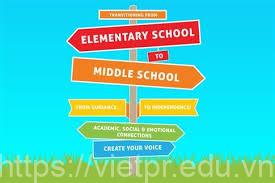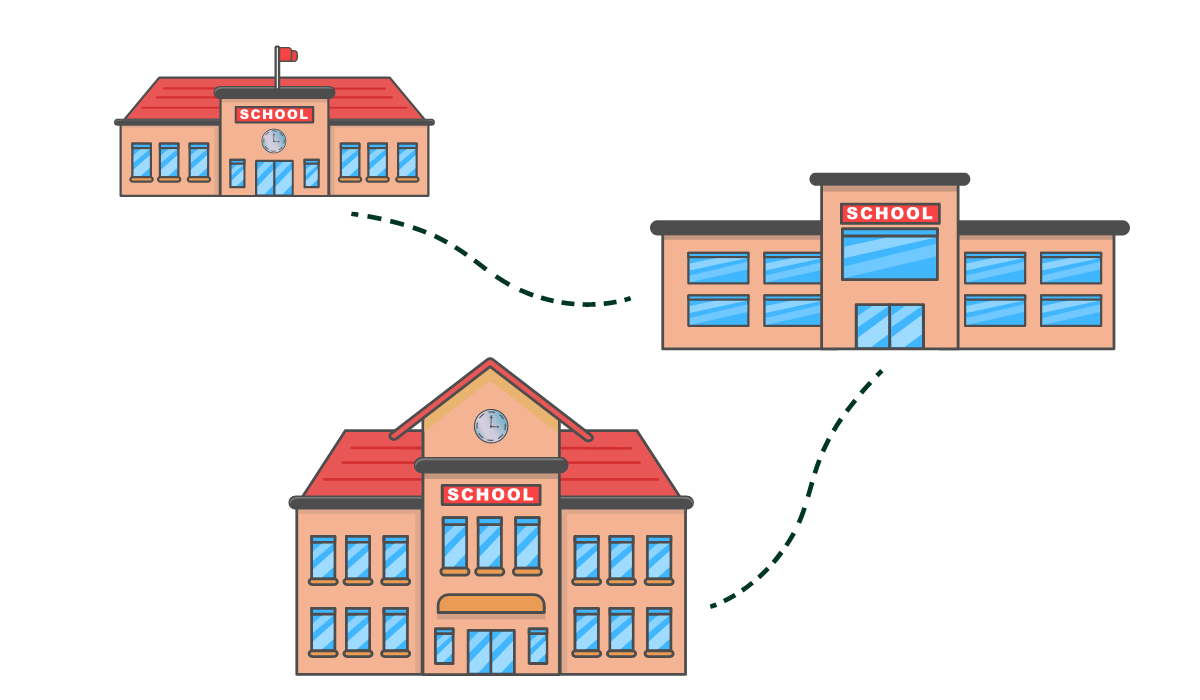Transition To Elementary School: A Comprehensive Guide For Parents

Transitioning from preschool to elementary school is a significant milestone for children and their parents. As your child embarks on this new educational journey, it’s important to ensure a smooth and successful transition. At VietprEducation, we understand the challenges that may arise during this transition period. In this article, we will provide you with valuable insights and practical tips to navigate this process effectively. From preparing your child emotionally and socially to easing their academic transition, we’ve got you covered. Let’s dive into the key elements of a successful Transition to Elementary School.

| Key Takeaways |
|---|
| Understanding the importance of a smooth transition to elementary school |
| Tips for preparing your child for the transition |
| Strategies to support emotional readiness |
| Methods to develop essential social skills |
| Guidance for academic preparedness |
| Advice for adjusting to new routines and expectations |
I. Understanding the Transition to Elementary School
The Importance of a Smooth Transition
Transitioning from preschool to elementary school is a crucial milestone in a child’s educational journey. It sets the foundation for their academic and social development and plays a significant role in their future success. A smooth transition can help children feel more confident, secure, and ready to embrace the new challenges and opportunities that elementary school brings.
- It allows children to adjust to new routines, expectations, and classroom environments.
- It helps foster a positive attitude towards learning and school in general.
- It supports the continuity of learning and ensures a seamless progression from preschool to primary education.
Understanding Developmental Changes
Transitioning to elementary school involves navigating various developmental changes that children experience during this period. It’s essential for parents and educators to understand these changes and provide appropriate support to ease the transition.
For example, children may experience:
- Increased independence and decision-making abilities.
- Development of more complex social skills, such as cooperating, sharing, and resolving conflicts.
- Improved language and communication skills.
- Greater cognitive abilities, including critical thinking and problem-solving.
- Enhanced physical coordination and motor skills.
Understanding these developmental changes can enable parents and educators to tailor their support and guidance to meet the unique needs of each child during the transition to elementary school.
Building a Strong Parent-School Partnership
A successful transition to elementary school requires a strong partnership between parents and the school community. Effective communication and collaboration between parents and educators can greatly support the child’s adjustment and create a positive learning environment.
Here are some ways parents can connect with the school:
- Attend orientation sessions and parent-teacher meetings to understand school policies, procedures, and expectations.
- Establish open lines of communication with your child’s teacher to discuss any concerns or updates.
- Get involved in school events, volunteer opportunities, and parent committees.
By actively engaging with the school, parents can foster a sense of belonging and demonstrate their commitment to their child’s education.
II. Preparing for the Transition

Easing the Anxiety
Starting elementary school can be overwhelming for young children. By acknowledging and addressing your child’s feelings of anxiety, you can help ease their transition. Encourage open communication by discussing their thoughts and concerns about the upcoming changes. Assure them that it’s normal to feel a mix of excitement and nervousness, and emphasize that you’ll be there to support them every step of the way.
Here are some additional ways to ease anxiety:
- Create opportunities for your child to visit their future school before the transition.
- Introduce them to their new teacher, if possible.
- Arrange playdates or social events with incoming classmates.
Establishing a Routine
Helping your child establish a routine can provide a sense of structure and stability during the transition. As they prepare for elementary school, gradually adjust their daily schedule to align with school hours. This can involve setting consistent wake-up and bedtime routines, planning regular meal times, and allocating specific time for homework or extracurricular activities. A smooth and predictable routine will help your child feel more confident and prepared for their new school environment.
Consider incorporating the following elements into your child’s routine:
| Element | Implementation |
|---|---|
| Consistent Sleep Schedule | Ensure your child gets enough sleep by setting regular bedtimes and wake-up times. |
| Structured Study Time | Designate a specific time and place for homework or independent learning activities. |
| Healthy Meals and Snacks | Provide nutritious meals and snacks at regular intervals to support your child’s concentration and energy levels. |
Encouraging Independence
Promoting your child’s independence is crucial in preparing them for elementary school. Gradually introduce age-appropriate responsibilities and encourage them to take initiative in tasks such as getting dressed, packing their backpack, and organizing their belongings. This will help build their self-confidence and make them feel more capable of managing their own responsibilities in their new school setting.
Here are some ways to foster independence:
- Assign age-appropriate chores and give them the opportunity to contribute to household tasks.
- Encourage decision-making, allowing them to choose their outfits or snacks within appropriate bounds.
- Teach problem-solving skills by encouraging them to think critically and find solutions to simple challenges they encounter.
III. Supporting Emotional Readiness

- Engage in conversations about what they can look forward to in elementary school.
- Talk about the importance of trying new things and embracing challenges.
- Share stories or anecdotes about your own positive experiences from elementary school.
- Show enthusiasm and excitement when discussing their upcoming transition.
Nurturing Emotional Intelligence
Nurturing emotional intelligence is crucial for helping children navigate through their emotions effectively. This skill becomes even more important during times of transition, such as starting elementary school. Encourage open communication with your child by creating a safe space where they feel comfortable expressing their feelings and concerns. Validate their emotions and help them develop coping strategies to manage any challenging or overwhelming emotions they may experience.
| Tips for Creating a Positive Mindset: | – Engage in conversations about what they can look forward to in elementary school. | – Talk about the importance of trying new things and embracing challenges. | – Share stories or anecdotes about your own positive experiences from elementary school. | – Show enthusiasm and excitement when discussing their upcoming transition. |
|---|
| Benefits of Nurturing Emotional Intelligence: |
| – Enhanced self-awareness and understanding of emotions |
| – Improved ability to regulate emotions in stressful situations |
| – Increased empathy and understanding towards others |
| – Effective conflict resolution skills |
- Create a safe and non-judgmental environment for your child to express their emotions.
- Teach them simple techniques such as deep breathing or taking a break to calm themselves.
- Show empathy and validate their feelings, reassuring them that it’s normal to feel nervous or excited.
- Encourage problem-solving by brainstorming solutions together if they encounter any challenges at school.
IV. Developing Social Skills

The Importance of Social Skills in Early Childhood
Social skills play a crucial role in a child’s overall development and ability to thrive in various social settings. These skills encompass the ability to communicate effectively, share, take turns, resolve conflicts, and cooperate with others. Developing strong social skills not only supports positive relationships and friendships but also fosters empathy, emotional intelligence, and self-confidence. Children who possess excellent social skills are more likely to succeed academically and navigate social situations with confidence.
| Key Aspects of Social Skills Development: |
|---|
| – Effective communication |
| – Sharing and taking turns |
| – Conflict resolution |
| – Cooperation and teamwork |
| – Empathy and understanding |
There are various strategies parents can implement to help their child develop essential social skills:
- Encourage playdates: Arrange opportunities for your child to interact and play with other children outside of school. This allows them to practice social skills in a supportive and supervised environment.
- Promote cooperative activities: Engage your child in activities that require collaboration and teamwork, such as building puzzles, playing board games, or working on arts and crafts projects together.
- Teach conflict resolution: Guide your child on how to resolve conflicts peacefully by encouraging them to express their feelings, actively listen to others, and find mutually beneficial solutions.
- Model positive social behaviors: Children learn by observing and imitating. Demonstrate good social skills yourself and provide opportunities for your child to witness positive social interactions.
- Celebrate diversity: Encourage your child to embrace diversity and appreciate the unique qualities of others. Teach them about different cultures, traditions, and perspectives to develop empathy and understanding.
V. Academic Preparedness

| Benefits of Fostering a Love for Learning: |
|---|
| 1. Increased motivation for academic achievement |
| 2. Enhanced engagement and participation in classroom activities |
| 3. Improved problem-solving and critical thinking skills |
| 4. Greater curiosity and enthusiasm for exploring new topics |
VI. Adjusting to New Routine and Expectations

Transitioning to a new routine and adjusting to the expectations of elementary school can be challenging for both parents and children. By establishing a consistent schedule, communicating expectations clearly, and offering emotional support, you can help ease this transition and set your child up for success. Remember to be patient and understanding as every child may adapt differently. With your guidance and support, your child will soon thrive in their new school environment.
VII. Conclusion
Transitioning to elementary school is a significant milestone in a child’s educational journey. By understanding the importance of a smooth transition and following the practical tips provided in this guide, parents can help their children thrive during this time of change. From preparing children emotionally and socially, developing essential social skills, ensuring academic preparedness, and adjusting to new routines and expectations, this comprehensive guide offers valuable insights to support parents in navigating the transition process successfully.
